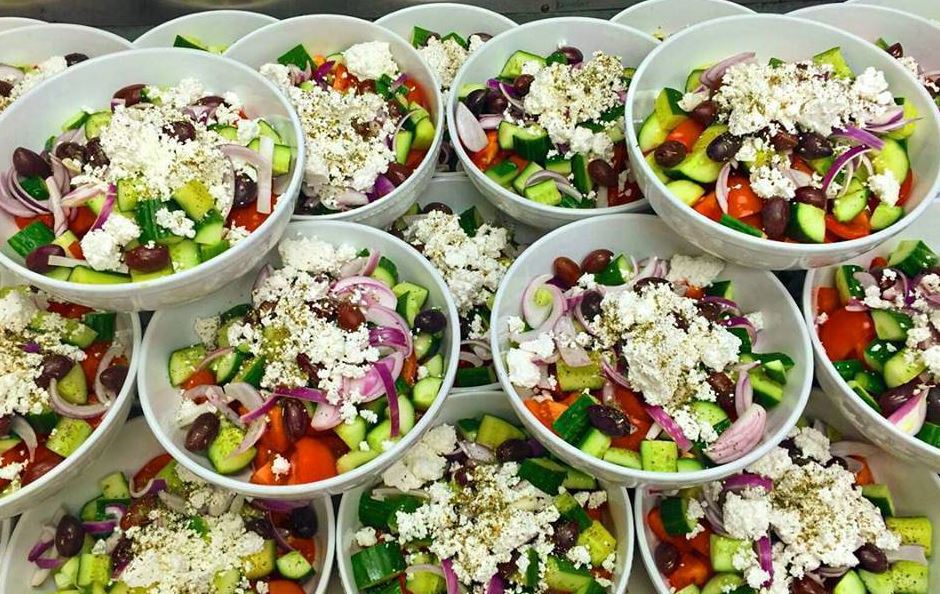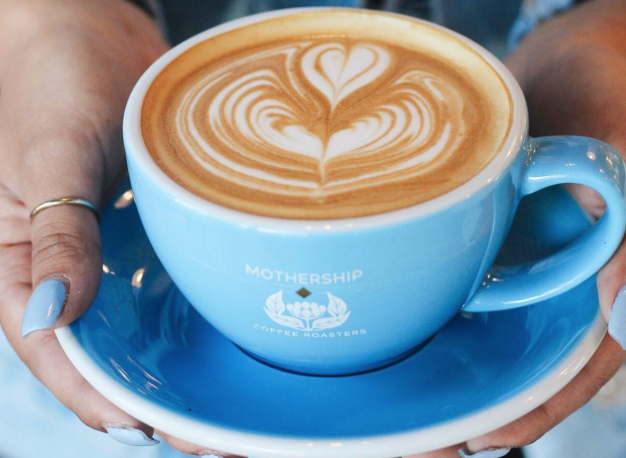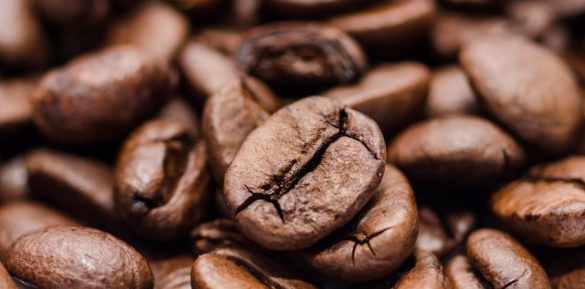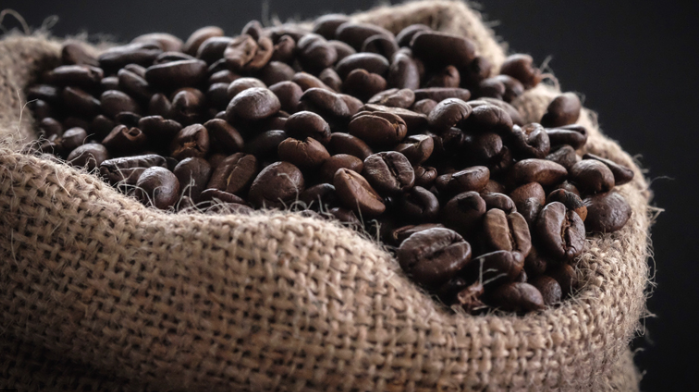Mediterranean Magic – Elevate Your Event with Greek Food Catering
Are you looking to add a touch of Mediterranean magic to your next event?
Greek food catering may be the perfect choice for you. From healthy and nutritious options to unique and authentic flavours, Greek cuisine offers a versatile and customizable menu that will surely please all your guests.
We will explore the most famous Greek dishes for catering, how to choose the right caterer, and what to expect from a Greek food catering service.
Let’s dive in and elevate your event with the delicious flavours of Greece!
What is Greek Food Catering?
Greek Food Catering brings the essence of the Mediterranean to your event with a delightful array of traditional Greek cuisine. It offers an authentic culinary experience that elevates any occasion to one filled with the magic of Greek flavours and hospitality.
Imagine your guests being transported to the charming streets of Athens or the picturesque Greek islands as they indulge in mouth-watering dishes like gyro wraps, spanakopita, baklava, and tzatziki. Each bite is a celebration of fresh ingredients, bold flavours, and centuries-old recipes passed down through generations, reflecting the rich culinary heritage of Greece.
With Greek Food Catering, you not only savour the delectable dishes but also immerse yourself in the warm embrace of Greek culture, creating a memorable and uniquely enchanting experience for all attendees.
Why Choose Greek Food for Your Event?
Choosing Greek Food for your event is a decision that will magically elevate the experience for your guests. The flavours of Greek dishes are delicious and diverse, catering to a wide array of taste preferences. Each bite is a burst of Mediterranean authenticity, from the tangy tzatziki to the savoury souvlaki.
Guests will be pleasantly surprised by the rich history and tradition embedded in every dish, creating a sense of cultural immersion. Combining fresh ingredients, aromatic herbs, and wholesome cooking techniques ensures that every meal element exceeds expectations, leaving a lasting impression on attendees.
Greek cuisine shines in event catering, where quality and guest satisfaction are paramount.
Healthy and Nutritious Options
Greek Food Catering provides various healthy and nutritious options, following the principles of the Mediterranean diet. Using fresh ingredients, the menu offers guests a range of healthy choices that cater to various dietary preferences and requirements.
These dietary preferences are considered with options like vegetarian moussaka, grilled fish with lemon and herbs, and traditional salads made with vibrant, nutrient-rich produce.
The emphasis on freshness is evident in every dish, with olive oil, herbs, and vegetables playing a prominent role.
The Mediterranean diet, known for its heart-healthy benefits, influences the menu to ensure customers enjoy flavourful meals without compromising health.
Greek Food Catering aims to provide a dining experience that delights the taste buds and supports overall well-being.
Versatile and Customizable Menu
Greek Food Catering offers a versatile and customisable menu that caters to a diverse range of preferences. Guests can enjoy personalised selections, including vegetarian options and delightful seafood dishes, ensuring a tailored culinary experience.
The flexibility of Greek Food Catering menus goes beyond just vegetarian options and seafood dishes. With a focus on customisation, guests can request adjustments to suit specific dietary needs, such as gluten-free, vegan, or nut-free preferences. This versatility allows for a truly inclusive dining experience, where guests can indulge in delicious Greek cuisine tailored to their tastes.
The menu planning process ensures that guests with diverse dietary preferences can savour the rich flavours and cultural delights of Greek cuisine, from savoury appetisers to mouth-watering main courses and indulgent desserts.
Unique and Authentic Flavours
The essence of Greek Food Catering lies in its unique and authentic flavours that transport guests to the traditional tastes of Greece. Each dish is crafted with care using fresh, high-quality ingredients to deliver a delicious culinary experience that embodies the richness of Greek tradition.
From savoury moussaka layered with tender aubergine and seasoned minced meat to tangy tzatziki sauce made with creamy yoghurt and crisp cucumbers, Greek Food Catering captures the essence of Mediterranean cuisine in each bite.
Using aromatic herbs like oregano, mint, and dill adds layers of flavour complexity, while olive oil, a staple in Greek cooking, imparts a rich and fruity undertone to every dish.
The emphasis on grilled meats, such as succulent souvlaki skewers and juicy lamb chops, showcases the traditional preparation methods that define Greek culinary excellence.
What Are the Most Popular Greek Dishes for Catering?
Regarding Greek Food Catering, certain specialities are the most popular event choices. From mouth-watering starters to hearty main courses, these dishes showcase the best Greek cuisine and will impress your guests.
- Greek catering services often feature classic starters like spanakopita, a flaky pastry filled with spinach and feta, or delicious dolmades, vine leaves stuffed with a savoury rice and herbs.
For main courses, a crowd favourite is souvlaki, grilled skewers of marinated meat served with tzatziki sauce and pitta. Specialities like moussaka, a baked casserole of layers of aubergine, minced meat, and béchamel sauce, add a touch of elegance and tradition to any event catered with Greek flavours.
Gyros
Gyros is a traditional Greek dish favourite among Greek food catering services. These flavoursome wraps filled with seasoned meat, fresh veggies, and tangy tzatziki sauce are popular for events seeking a taste of Greece.
- The preparation of Gyros involves thinly sliced meat, traditionally beef, lamb, or chicken, seasoned with herbs and spices like oregano, garlic, and onion.
- The meat is then cooked on a vertical rotisserie, giving it a deliciously crispy exterior and juicy interior.
- Adding crisp lettuce, ripe tomatoes, onions, and creamy tzatziki sauce wrapped in warm pita bread creates a culinary experience that appeals to many event attendees.
Gyros bring a taste of the Mediterranean, making them a must-have on catering menus for a touch of authenticity and flavoursome satisfaction.
Souvlaki
Souvlaki, a classic Greek dish of skewered and grilled meat, is a beloved option in Greek Food Catering menus. These flavoursome kebabs, often served with pitta and tzatziki, capture the essence of Mediterranean cuisine and are a crowd-pleaser at any event.
The preparation of Souvlaki involves marinating the meat in a mixture of olive oil, lemon juice, garlic, and herbs, imparting a zesty and aromatic flavour profile to the dish. The grilling process adds a smoky char that enhances the overall taste, creating a perfect balance of textures and flavours.
Alongside the tender, juicy meat, traditional sides like Greek salad, roasted vegetables, and rice pilaf are often served to complement the kebabs, offering a well-rounded and satisfying meal for guests. This combination of savoury meats and fresh accompaniments epitomises the rich culinary heritage of Greece and is a testimony to the artistry of Mediterranean gastronomy.
Spanakopita
Spanakopita, a savoury Greek pastry filled with spinach and feta cheese, is a delightful vegetarian option often featured in Greek Food Catering menus. Its flaky layers and flavoursome filling make it a popular choice for guests with diverse dietary preferences.
The preparation of Spanakopita involves layering buttered filo dough with a mixture of sautéed spinach, onions, herbs, and crumbled feta cheese, creating a rich and satisfying blend of flavours. This dish not only appeals to vegetarians but also to those seeking a lighter alternative to meat-based options. Its versatility allows for easy customisation, making it an excellent addition to event catering selections for luncheons, weddings, or other gatherings where various palates must be accommodated. The crispy exterior and soft, cheesy interior makes Spanakopita a crowd-pleaser that will impress even the most discerning guests.
Moussaka
Moussaka, a classic Greek casserole dish layered with aubergine, minced meat, and creamy béchamel sauce, is a beloved main course in Greek Food Catering offerings. Its rich flavours and comforting texture make it a staple dish for events seeking traditional Greek cuisine.
This iconic dish is a labour of love that involves meticulously layering sautéed aubergine slices with a savoury meat mixture seasoned with aromatic herbs and spices. The top layer of luscious béchamel sauce adds a creamy finish that perfectly complements the hearty base. A perfect blend of Mediterranean flavours, Moussaka’s popularity extends beyond Greece, captivating taste buds worldwide. Caterers often feature Moussaka on their menus to offer a taste of authentic Greek cuisine, catering to those who appreciate the warmth and heartiness of traditional dishes.
Greek Salad
The iconic Greek Salad is a refreshing and flavoursome option in Greek Food Catering services. Comprising fresh vegetables, feta cheese, olives, and a drizzle of olive oil, this healthy and vibrant dish embodies the essence of Mediterranean cuisine.With its colourful array of ingredients, such as crisp cucumbers, juicy tomatoes, crunchy bell peppers, and tangy red onions, the Greek Salad not only pleases the palate but also provides a visual feast perfect for event catering selections. The artful arrangement of these fresh produce items topped with savoury herbs like oregano and a splash of lemon juice adds flavour. It showcases the natural goodness of Mediterranean culinary traditions.

What to Expect from a Greek Food Catering Service?
Choosing a Greek Food Catering service promises a culinary journey filled with top-notch quality and fresh ingredients. From professional service to attention to detail, expect an unforgettable dining experience that caters to your event’s unique needs.
Every dish curated by the catering service is a testament to their dedication to excellence in event dining. The use of the freshest produce showcases a commitment to quality that is evident in every bite. In addition to providing delectable dishes, the catering team pays meticulous attention to every aspect of the event, ensuring that every guest’s palate is delighted and every detail is flawlessly executed. With the expertise and flair for culinary art, the Greek Food Catering service transforms any occasion into a memorable feast.
Read More →




